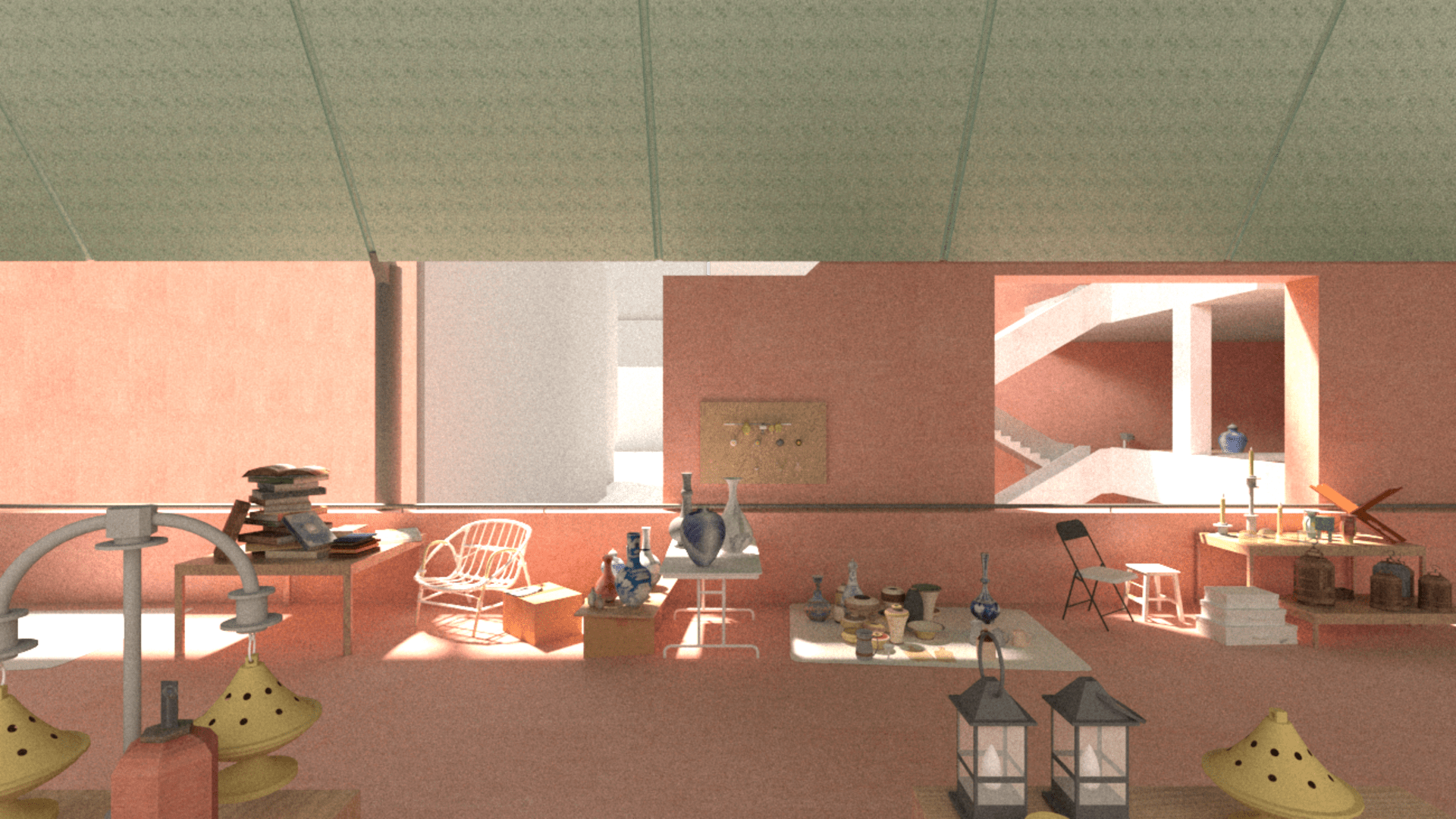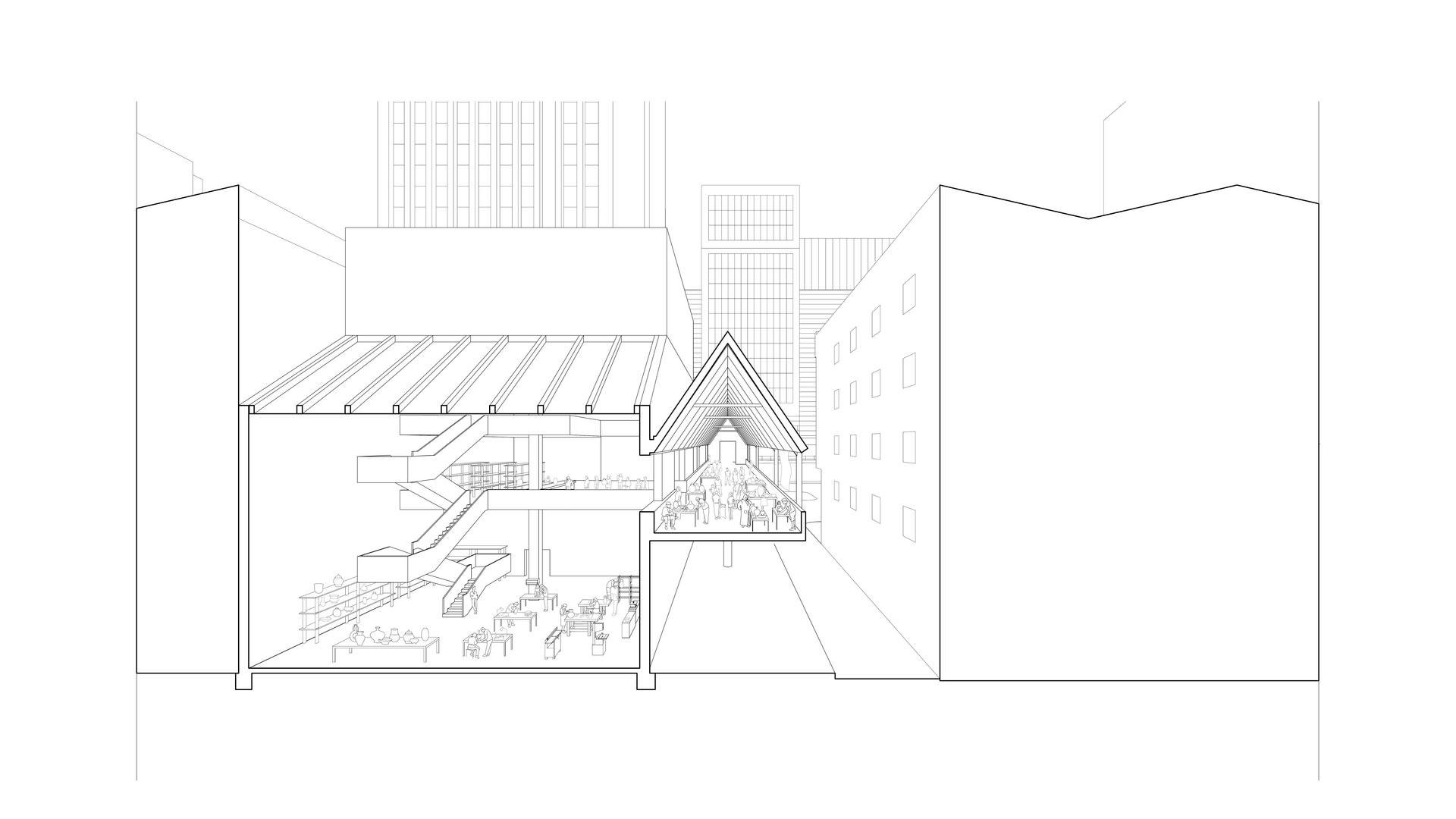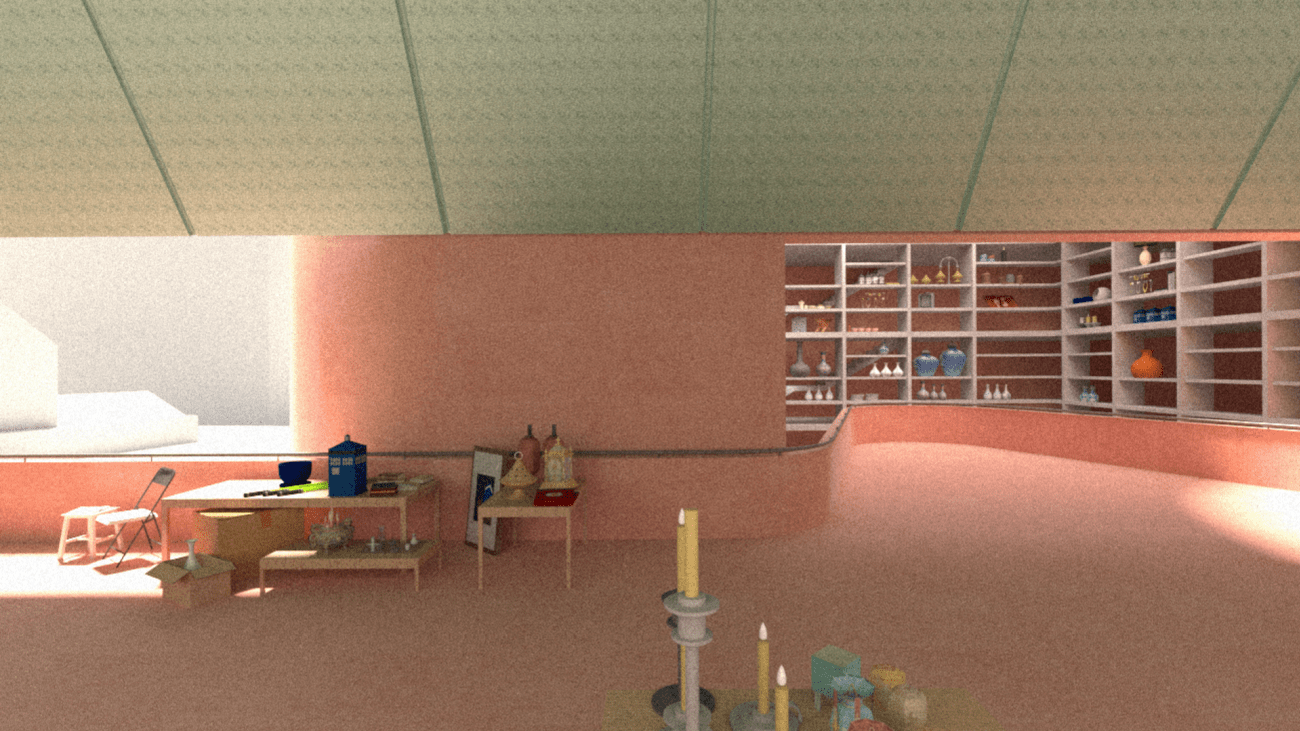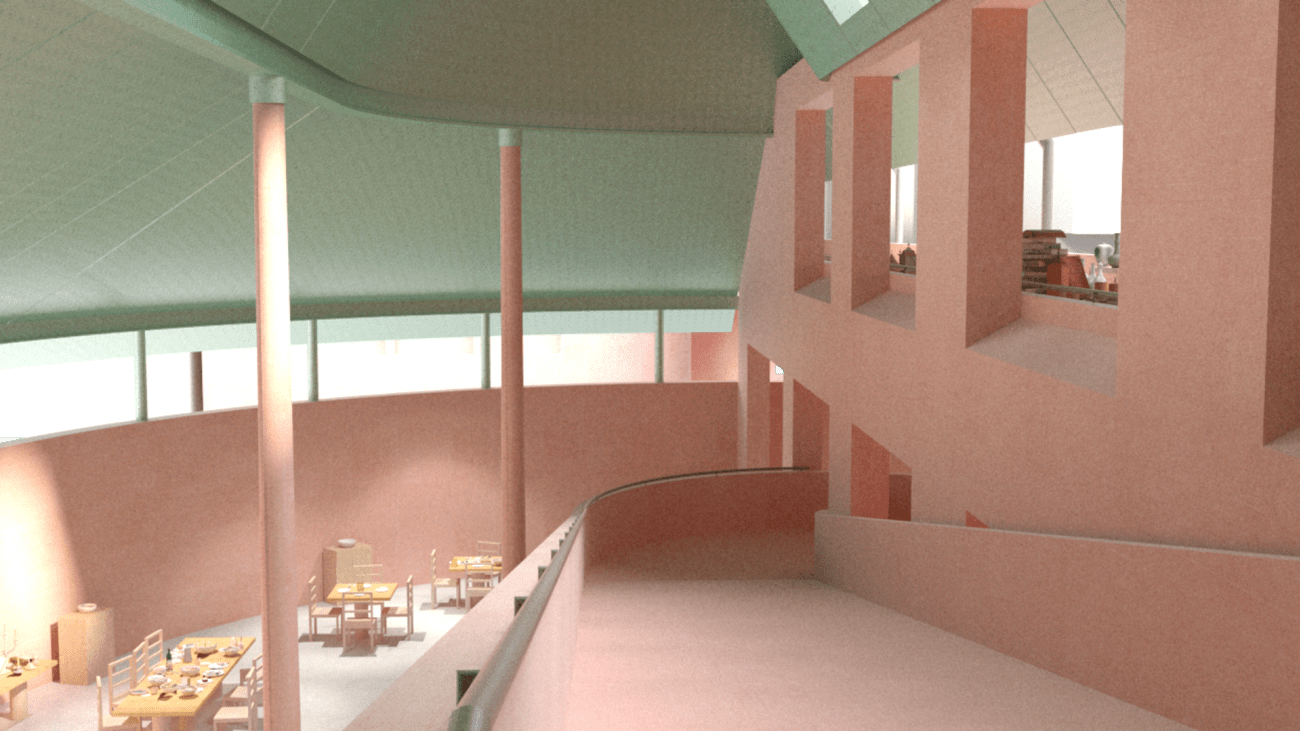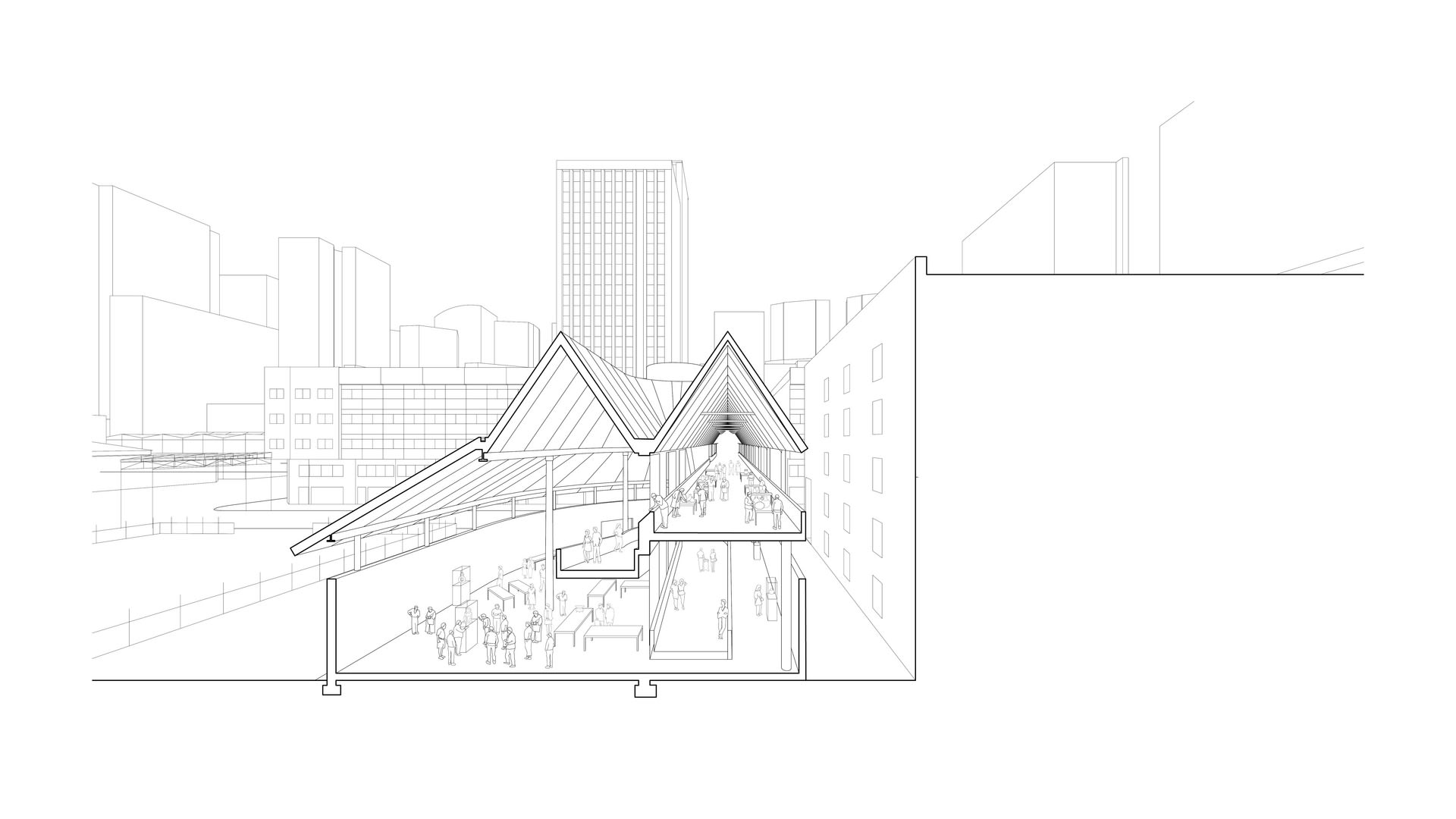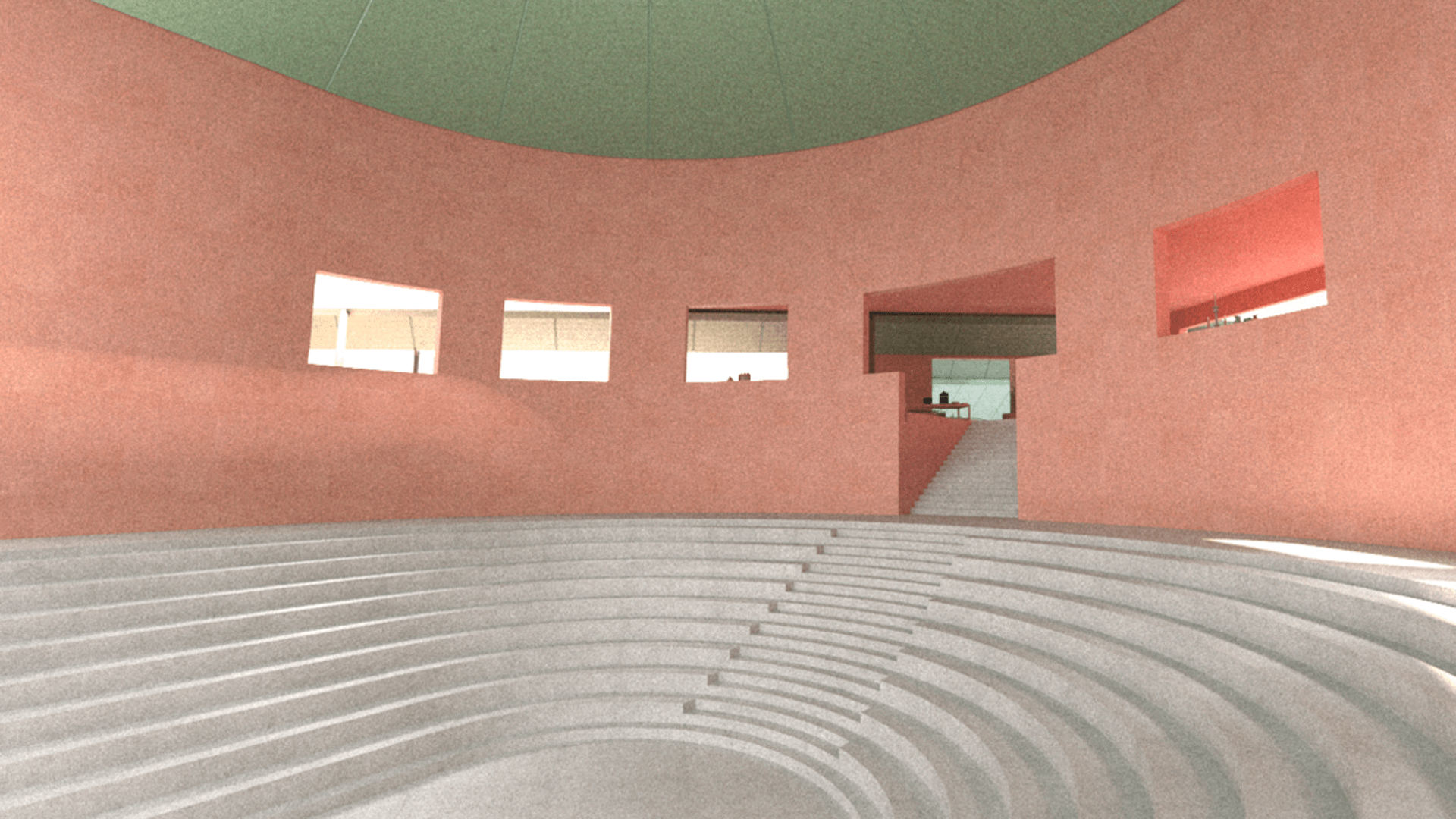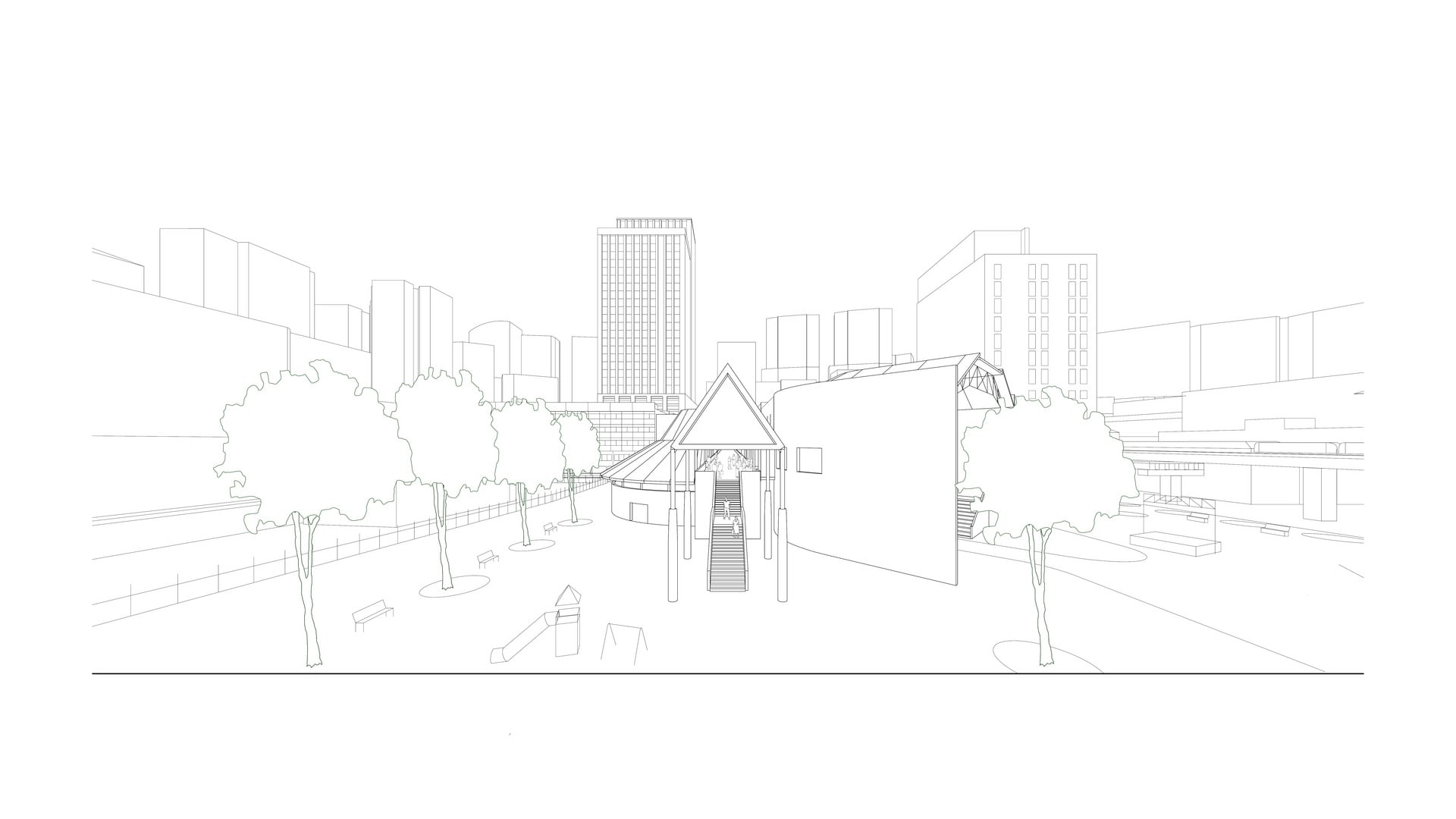from Kuala Lumpur; completed BA from Manchester School of Architecture.
Nelson Tang
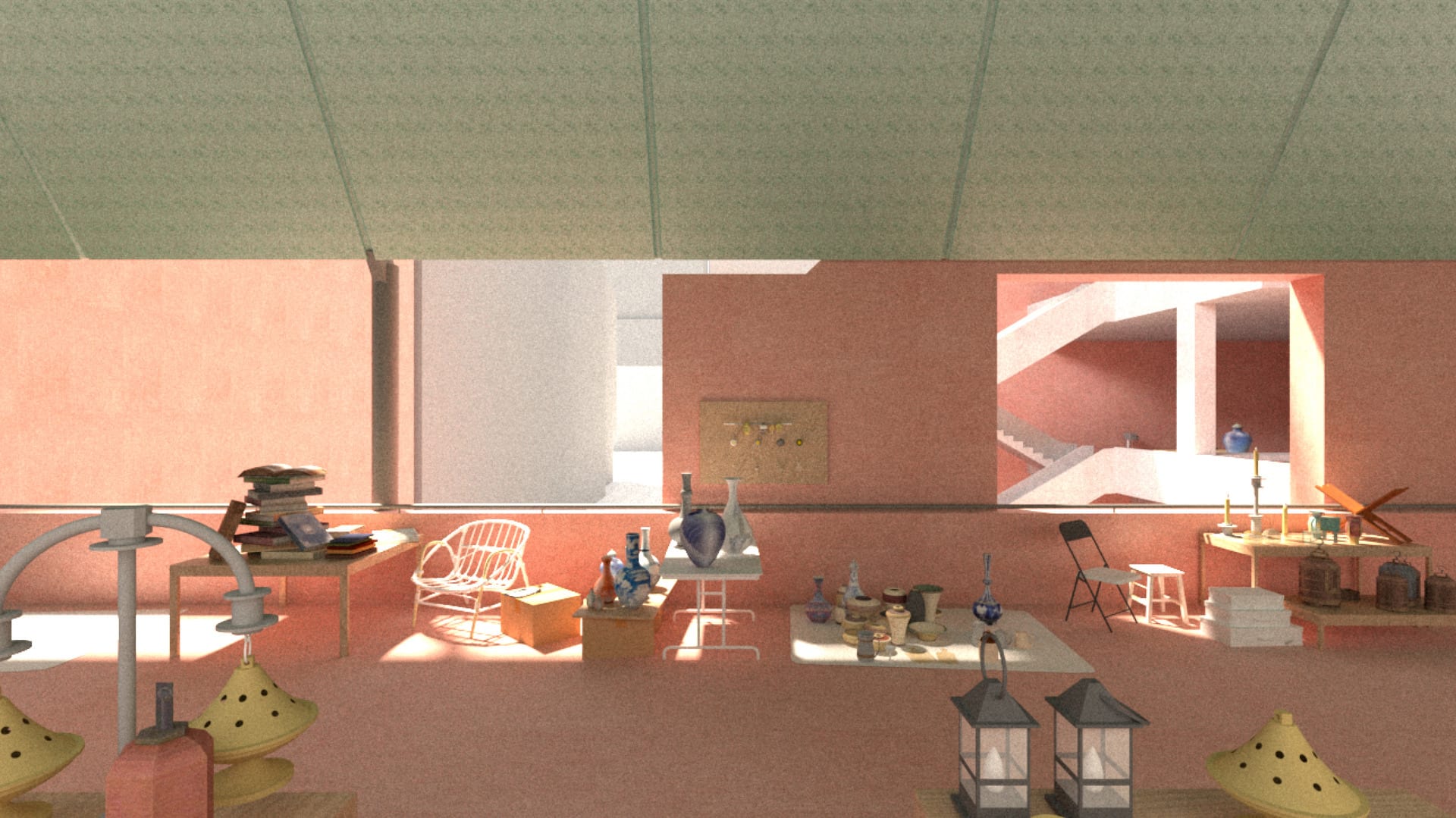

MUSEUM OF THE EVERDAY. PROMENADE OF OBJECTS
My project explores the meaning of fabricated artefacts in human society. The stability and durability of our objects form a common ground that relates individuals with generations. The museum can play a fundamental role in this correspondence. Instead of preserving and collecting objects for abstract interests, such as the intellectual gaze of the scholar or the collective project of a nation state, it can indeed connect to the everyday processes that take place in our cities. The project aims to imagine a museum where the collection and preservation of objects can be fully deinstitutionalised.
The strongest gesture of the project is a line, an elevated promenade that connects two parts of the city. On one end, there is the transport hub, a endless interior of retail and office space, and on the other, the low dense neighbourhood where the local community dwells. The new promenade articulates into a series of episodes that take place along the second-hand market. Here objects can be brought to be fixed or reused, or even store in an archive, artisans can work on them, and traders are able to set up their stalls along the path. The intellectual isolation of the traditional museum is subverted by this new public and variable use. The museum’s most essential element is the street-like atmosphere of a market promenade, which contrast with the inclusivity of the shopping mall that it attaches to.
This museum of everyday objects does not counteract against the daily trading of objects in the city, but it rather elevates the marketplace as its core, as a place of collective encounters. The street-market opens up to unknown possibilities of collective and political life in the city. Objects at the end of this promenade can possibly reach their stasis, by being exposed in the hall, the last of the episode along the promenade. Here they become fragments of a past everyday life. Objects are the real subjects of this project, they are revelatory of collective activities, can be stored in an archive, exhibited in public spaces, or possibly sold in the market. Objects live as testimonies of a human life.

The project formally draws inspiration from James Stirling’s Staatsgallerie, interpreted as a playful collage of fragments that seemingly perform separately. The building is an urban artefact, where each element is as much part of the city as it is a self-contained assembly. These autonomous forms are joined together by the experience of a promenade punctuated by a series of episodes that appear either as nodes or thresholds.
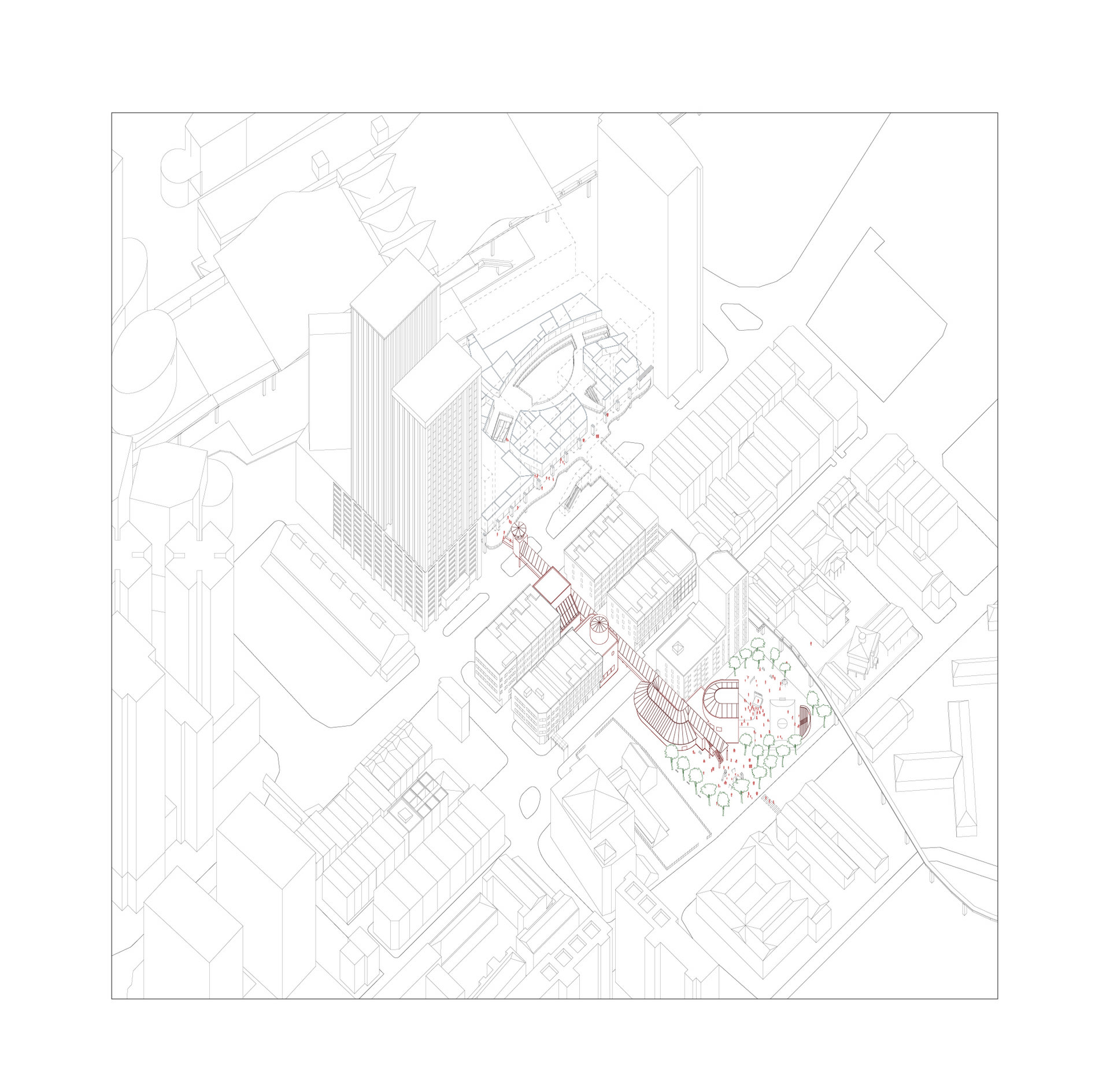

The core of the museum is the market. Yet, unlike the promenades of the shopping centre, the intention of this promenade is to bring objects into an eventual state of stability using the processes of the museum. The building is as an extension of the commuter city but at the same time is embedded into the surrounding urban form.
On one end, a gateway welcomes the visitor crossing over from dense traffic through to the back streets of brickfields. Arriving on the other end, the building opens up into a public garden and field.
